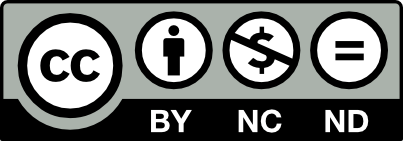This page is licensed under Creative Commons under Attribution 4.0 International. Anyone can share content from this page, with attribution and link to College MatchPoint requested.
Rethinking the In-State Advantage: What the Data Really Shows About Admissions
Families assume that applying in state gave students an automatic admissions advantage. It felt like common sense. Public universities were created to serve local residents, and many parents carried that assumption into their own children’s college search. But the data shows the picture is more complicated. In some regions, being an out-of-state applicant can actually improve the odds of admission.

Where This Data Comes From
Each year our colleagues Jennie Kent and Jeff Levy analyze Common Data Set information from colleges and universities across the United States. The Common Data Set (CDS) is a collection of standardized questions about a college’s admissions practices, financial aid, graduation rates, student demographics, and more. It is created annually by the College Board in partnership with several higher education associations and organizations. Their careful compilation and analysis allow us to see patterns across hundreds of institutions. You can find their full analysis here if you would like to dig deeper.
What the Data Shows
When we look across 309 colleges, in-state and out-of-state admit rates usually move in the same direction. In other words, schools that are accessible to residents are also often accessible to outsiders. Yet once you examine the numbers by region, the picture becomes more nuanced.
The West Coast is the biggest surprise. On average, out-of-state students are admitted at higher rates than in-state applicants. That runs counter to what most families expect and reflects how some public universities balance enrollment and revenue. In the Plains states, including the University of Nebraska–Lincoln, in-state students hold a small advantage. In the Southeast, the University of Georgia heavily favors local residents. Meanwhile, in the Mid-Atlantic and New England, private universities such as New York University and Boston University admit more out-of-state students, building national pools that match their brand and tuition strategy.
For families in Texas, the story is more traditional at the flagships. UT Austin and Texas A&M prioritize Texas residents in line with their public mission and funding structure. Yet other Texas institutions show exceptions. Trinity University in San Antonio attracts students nationally, and Rice University has become a global destination with no residency preference in its selective admissions process.
Why These Patterns Exist
These patterns are shaped by funding models and institutional goals. Public universities in states with strong financial support, like Georgia, can afford to favor residents. Publics in states with tighter budgets often admit more out-of-state students, who pay higher tuition and help cover costs. This financial pressure explains the out-of-state advantage seen in California and Oregon.
Private universities follow different rules. Their admissions priorities are shaped by institutional strategy rather than state policy. That is why NYU, Boston University, Rice, and Trinity draw nationally without giving locals an admissions edge.
It is also worth noting that averages hide variation. Even within one region, schools just a few miles apart may use very different approaches. That is why it is risky to assume that “in state is always easier.”
What Families Should Take Away
The key lesson is that geography is not a one-size-fits-all advantage. At some institutions, in-state students are prioritized. At others, particularly in regions with high tuition dependence or at nationally oriented private schools, out-of-state applicants may actually have the edge.
For Texas families, this means recognizing the difference between public flagships like UT Austin—where in-state preference is strong—and private colleges such as Rice or Trinity, where residency plays no role. For families looking beyond Texas, it means realizing that the in-state advantage does not always travel across state lines.
Practical Steps
- Research each school individually. Admissions priorities vary widely and do not always follow regional patterns.
- Understand the funding context. Public universities often balance their enrollment strategies with state funding levels and nonresident tuition revenue.
- Distinguish public from private. Publics answer to state policy, while privates respond to their own market strategies.
- Look beyond geography. Major, selectivity, and financial aid practices often play a bigger role than residency.
Final Thought
The assumption that in-state students always have an advantage is no longer universally true. In some places, local status still matters most. In others, particularly on the West Coast and at selective private institutions, out-of-state applicants are just as likely—or more likely—to be admitted. Families who base their planning on current data, not old assumptions, will make stronger, more informed choices as they navigate the admissions process.


